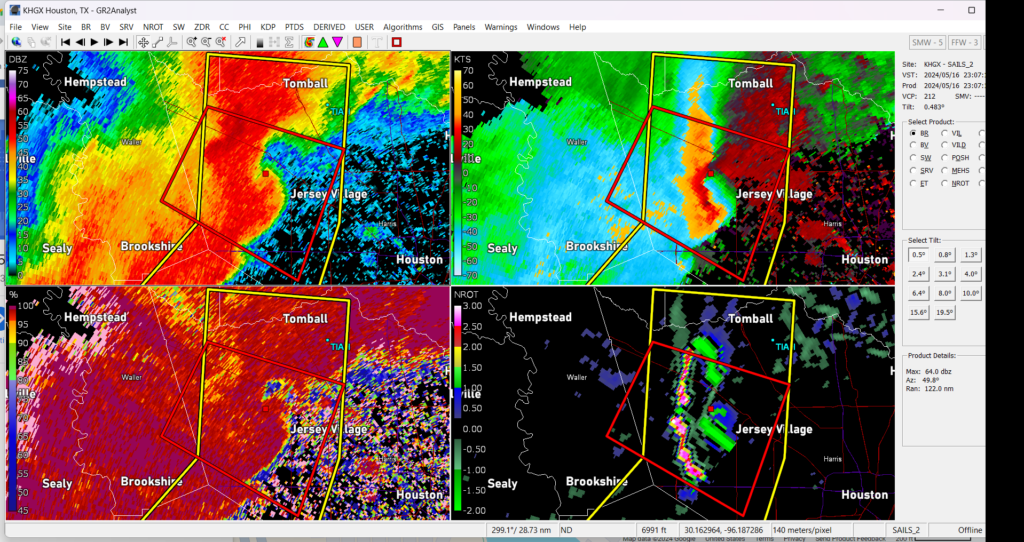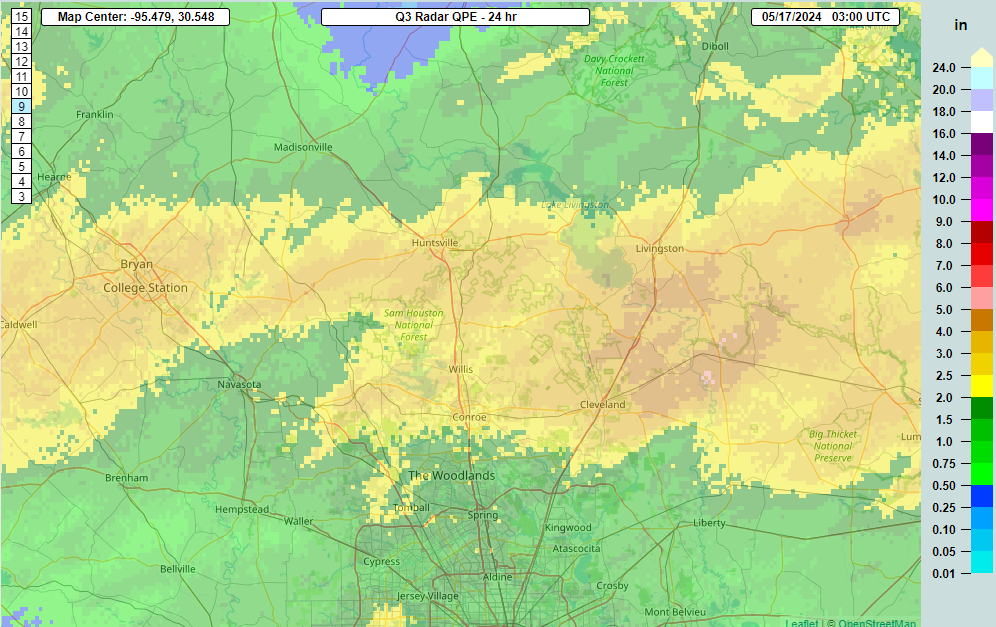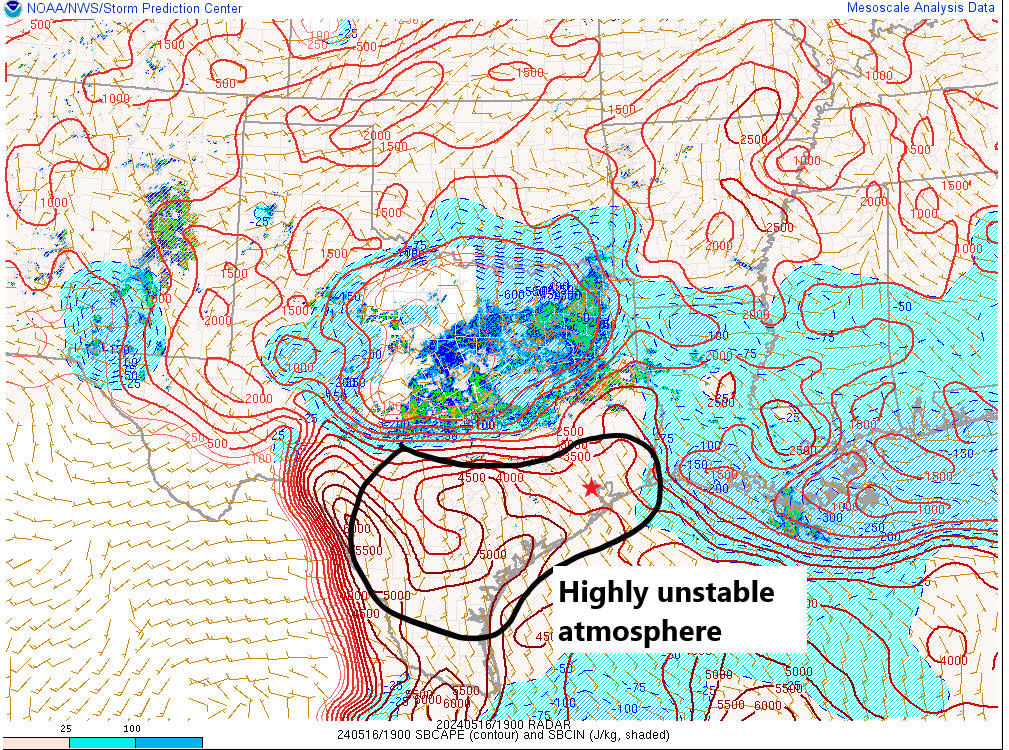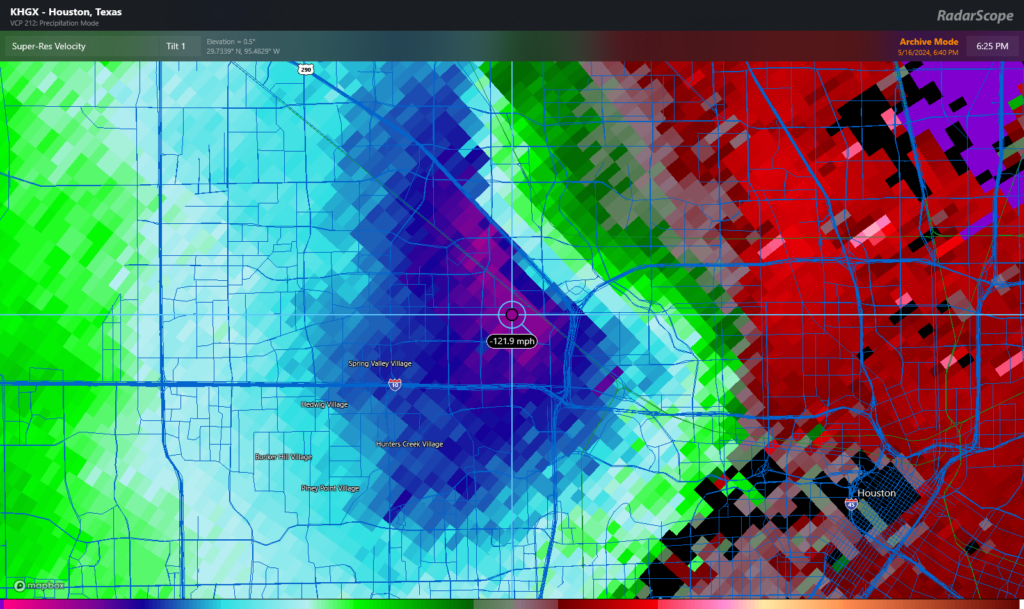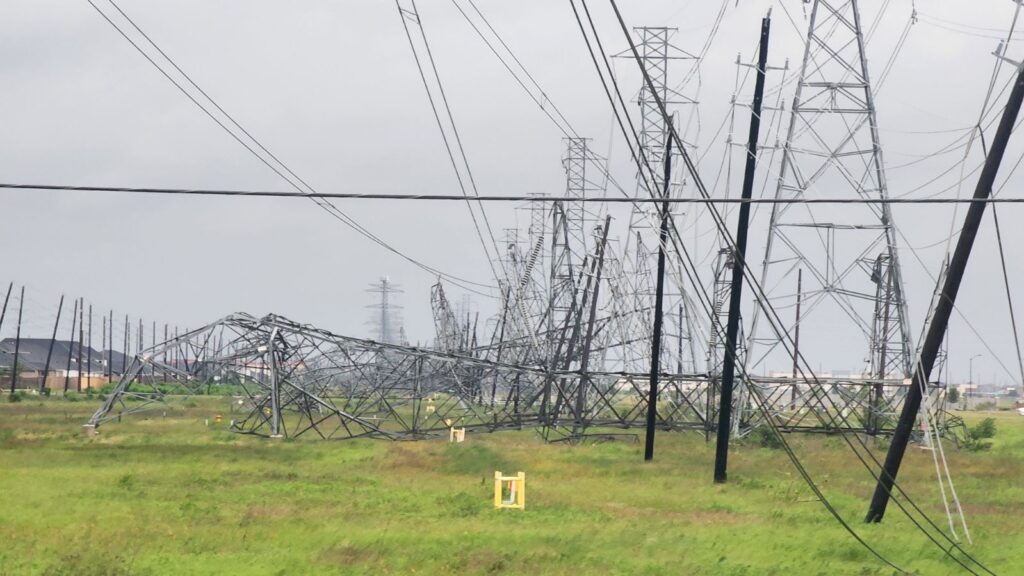In brief: Houston will remain warm and humid through next weekend, with partly to mostly sunny days and highs generally in the low 90s. Rain chances are low throughout the period. Today’s post also addresses some lingering questions from last week’s storms, including why the event was not particularly well predicted.
Over the weekend, the greater Houston region continued to recover from damaging winds last Thursday. On Sunday evening, CenterPoint said that it had restored electricity to more than 700,000 people who lost power, with about 240,000 customers still without. The transmission company said it remains on track to be “substantially complete” with power restoration by Wednesday evening. Before jumping into the forecast here are some additional thoughts about the very strong storms that arrived last week.
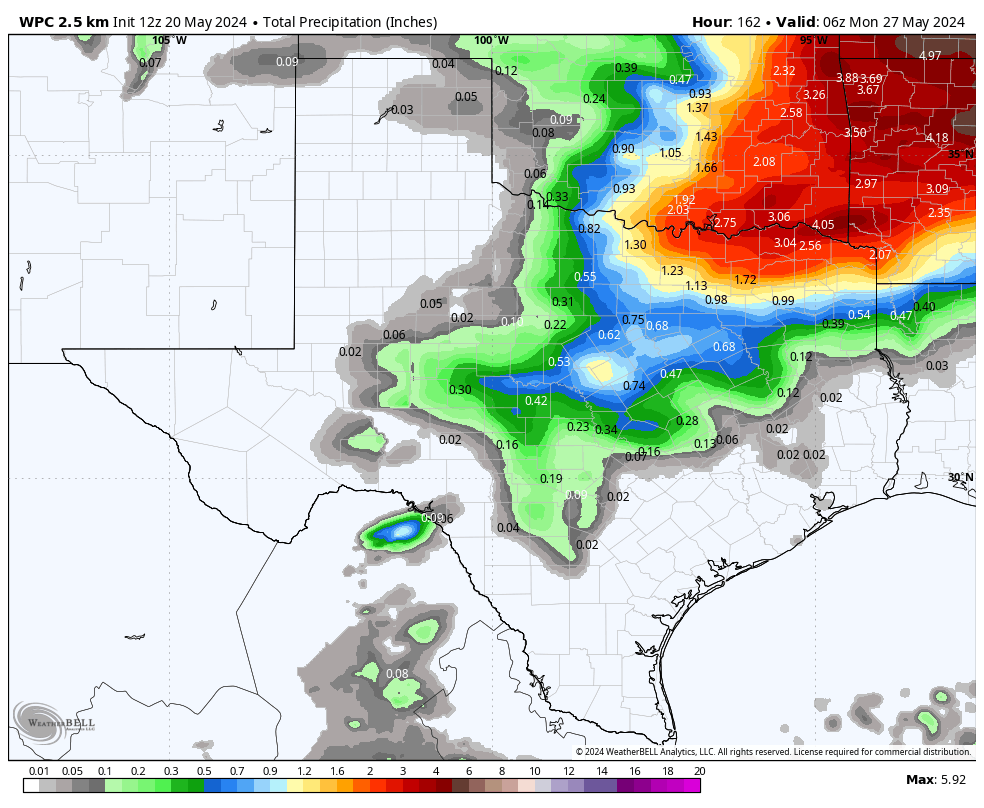
Why wasn’t this well predicted?
This is a great question. The answer is that we have seen these kinds of setups before in which there is an atmosphere primed with moisture and instability, and with a potential trigger for supercell storms to form many times before. However, even hours before their development just west of Houston on Thursday, there was no ready data to indicate the true severity of the blow-the-doors-off storm that was coming.
It’s the kind of thing where there maybe is a 1-in-50 or a 1-in-100 chance that something so severe, a supercell event with very strong straight-line winds directly over the city’s urban core, could develop. If we had messaged that an “extremely dangerous and destructive event” was coming the previous 10 times there was such an atmospheric setup, and nothing of any real significance happened, who would believe us on the 11th time? There is a boy-who-cried-wolf problem here. The only real solution here is that we try harder to find that bit of data that gives us more confidence in a rare event like this one. I’m confident that Thursday’s storms will be studied in depth to identify such clues.
I was lying in bed on Sunday morning thinking about all of this—yes, I lose sleep worrying about this kind of stuff—and of all things a 2002 Houston Texans football game popped into mind. It was December 8, the team’s first season, and being an expansion franchise the Texans were not great. That week the Texans had to go to Pittsburgh and play the Steelers in near-freezing temperatures for a meaningless game. The Steelers were a decent football team, nothing fantastic, but were expected to blow the Texans out. The line was Steelers -14. The Steelers outgained the Texans 442 yards to 47. They won the time of possession with 40 minutes to 20 minutes. Texans quarterback David Carr was 3-of-10 passing, for 33 yards. That was in line with expectations.
But the Texans won 24 to 6. They returned three turnovers for touchdowns, and kicked a field goal after a short drive. The Steelers had many more penalties. Their two long drives ended in field goals rather than touchdowns. It was just an odd day. While the final score was within the bound of possibilities, on any given Sunday anything can happen when two teams meet, it was the lowest probability event. That’s kind of like what happened Thursday. A super-storm was within the realms of possibility, but was like an expansion team playing terribly, but still blowing out the Pittsburgh Steelers on the road in very cold conditions.
Why weren’t there more real-time warnings?
This is something Matt and I are taking away from the storms. I feel like we do a good job of forecasting the weather here, but where we struggle is in real-time coverage. Some readers have asked why we did not send out warnings for tornadoes on Thursday. That is because this is the express function of the National Weather Service, which has a large staff and the technology to send out real time warnings for tornadoes and other life-threatening weather events. Here’s more information about the agency’s wireless emergency alerts program. They are the experts at that, and we defer to them.
Matt and I were both tracking Thursday’s storm in real time. We were on top of things. And there was perhaps a 30 to 60-minute window between 5:30 and 6:30 p.m. when we could have provided some actionable information. However, in the time it would take to write and disseminate a post about that in real-time, the dynamic event might have already passed for most people. One possible solution is that we are likely to start sending (albeit very rarely) “urgent notifications” through our app. It is available for free here for Apple ioS, and here for Android. Regardless, we recognize this as a weakness and will address it here at Space City Weather. For one thing, we are changing the frequency of updates on days when severe weather is possible.
Monday
Our overall warm, but not extremely hot pattern will continue as we inch toward the end of May. With high pressure largely in control we’ll see this pattern largely persist through the holiday weekend, with the only really noticeable change in the strength of southerly winds, or a few more clouds on some days. For today, we’ll see highs generally in the low 90s, with only coastal areas unlikely to reach 90 degrees. Skies will be mostly sunny. Winds will blow from the southeast at 5 to 10 mph. Overnight lows will be warmer than we’ve seen, dropping only into the upper 70s.
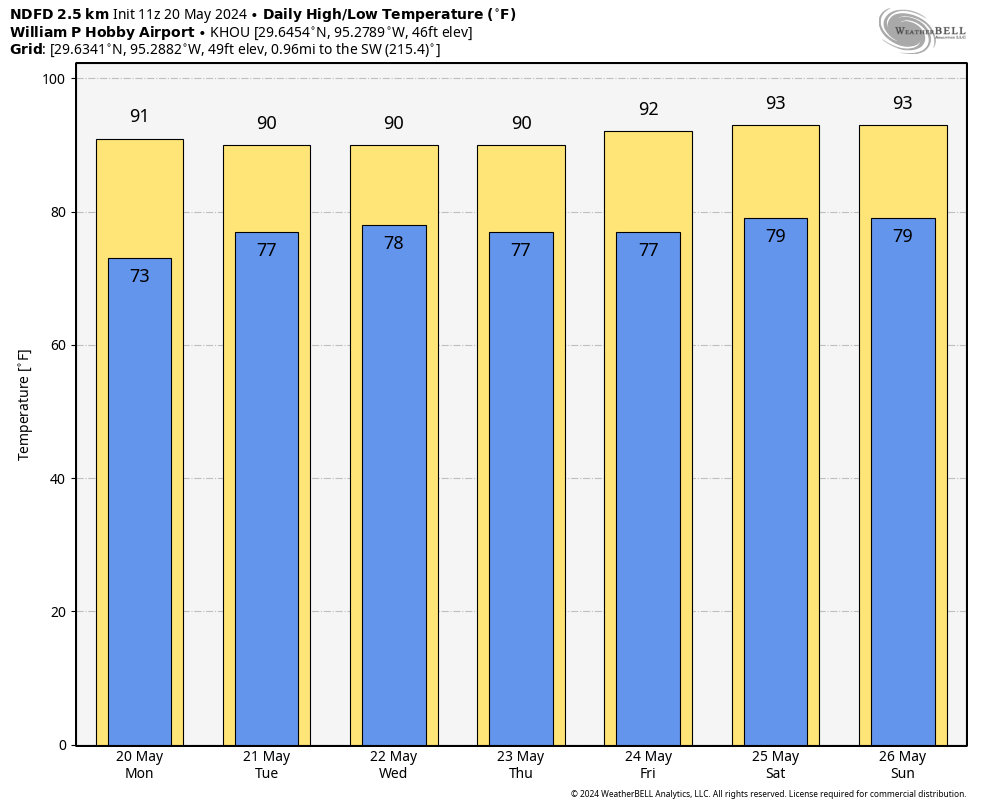
Tuesday and Wednesday
In response to low pressure over the central United States, we’ll see an uptick in southerly winds with gusts up to 25 mph. Both days will see partly to sunny skies, with highs around 90 degrees. Nights remain quite warm.
Thursday and Friday
These will be partly to mostly sunny days, with winds perhaps slackening a bit. Highs in the low 90s. There is perhaps a 10 percent chance of rain showers each afternoon.
Saturday, Sunday, and Monday
Memorial Day weekend looks warm and sunny. Expect highs in the low 90s, with warm nights. Rain chances remain near nil. Plan your outdoor activities with confidence.
Next week
There are some hints of a pattern change by Tuesday or Wednesday of next week, with possibly a weak front sneaking into the area at the end of the month, and bringing with it a smattering of rain chances. This is far enough into the forecast, however, that my overall confidence is quite low. We shall see.

